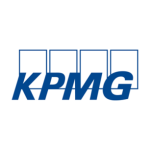In a memorandum dated May 19 2025, the Swedish government has proposed a legislative amendment to reduce the special income tax for non-residents (särskild inkomstskatt för utomlands bosatta, or SINK) from 25% to 20%, effective from January 1 2026. The proposed change would apply to income received on or after January 1 2026 and is expected to affect approximately 90,000 individuals currently subject to SINK taxation.
Overview of SINK and the legislative context
The SINK regime, governed by the Special Income Tax Act for Non-Residents (1991:586), provides a simplified taxation mechanism for individuals with limited tax liability in Sweden. Under this regime, non-resident individuals earning Swedish-sourced income such as employment income, pensions, and certain other remunerations may submit an application to be taxed at a flat rate, currently 25%, without the obligation to file a Swedish tax return. The tax is final, and no deductions for expenses are permitted.
The current rate has remained unchanged since 2018, despite broader reductions to other income tax rates. The government’s rationale for the proposed reduction is to restore tax neutrality, particularly in light of these recent reforms that have lowered the income tax burden for individuals subject to the regime for individuals who fall under the category of unlimited tax liability.
Policy objectives and fiscal impact
The Ministry of Finance anticipates that the proposed reduction will result in an annual revenue loss of approximately SEK700 million. However, this is viewed as a necessary adjustment to maintain the integrity and fairness of the Swedish tax system. The measure is also expected to enhance Sweden’s attractiveness to international talent and cross-border workers, particularly in sectors where short-term assignments and remote work arrangements are prevalent.
From a policy perspective, the proposal aligns with Sweden’s broader objective of ensuring that its tax framework remains competitive and administratively efficient. The SINK regime, by design, reduces compliance burdens for non-residents and facilitates tax collection through withholding at source. A lower rate may further incentivise compliance and reduce the risk of tax avoidance through informal arrangements.
Implications for employers and global mobility professionals
Employers with internationally mobile employees should assess the implications of the proposed rate reduction on their cost projections and payroll systems. While the change is expected to reduce the overall tax burden for affected individuals, it may also necessitate updates to internal policies, assignment cost estimates, and gross-up calculations.
For global mobility professionals, the proposal underscores the importance of proactive tax planning and communication with non-resident assignees. The transitional period leading up to January 1 2026 offers an opportunity to revisit existing SINK applications, evaluate eligibility, and ensure that payroll systems are configured to apply the new rate from the effective date.
Key takeaways on the reduction of the SINK rate
The proposed reduction of the SINK rate to 20% represents a significant policy shift aimed at enhancing tax neutrality and competitiveness. While the fiscal cost is non-trivial, the measure is consistent with Sweden’s commitment to a fair and efficient tax system. Stakeholders, including employers and tax advisers, should monitor the legislative process closely and prepare for implementation in advance of the 2026 effective date.












